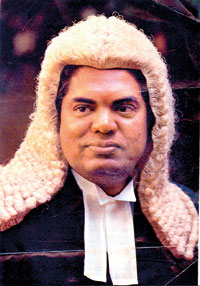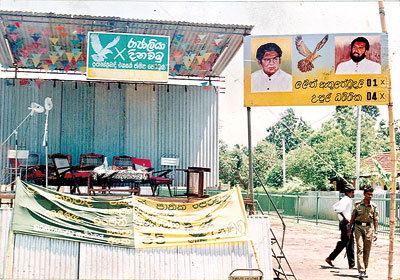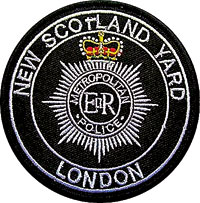News
Lalith Athulathmudali assassination, 30 years on: Murder mystery revisited
View(s):- Case remains unsolved; reports and investigations are contradictory and inconclusive as to
who killed one of Sri Lanka’s modern-day rising political stars

Lalith Athulathmudali: Lawyer, academic, and politician with a vision
Mr Lalith Athulathmudali, lawyer, academic and politician was assassinated 30 years ago on April 23, 1993. He was 57.
He was the son of D.D. Athulathmudali, a member of the State Council in pre-independent Sri Lanka. Educated at St. John’s College, Panadura and Royal College, Colombo he excelled in both studies and athletics. He passed out of Law College as a lawyer. Young Lalith’s father passed away when he was due to go for post-graduate studies. The late S.W.R.D. Bandaranaike as Prime Minister gave him a Government scholarship to pursue his studies. He was able to gain entry to Oxford University where he was a President of the famous Oxford Union. He became a Barrister in the UK and later went to Harvard University in the United States and got his Masters in Law (LLM).
Mr Athulathmudali became a law teacher soon after, teaching at the National University of Singapore where some of his students reached high positions under Prime Minister Lee Kuan Yew. He was invited to become a Singaporean citizen with a pledge to be inducted into the Singapore Cabinet at the time. Instead, he returned to Sri Lanka and joined the United National Party in 1973 whose leadership had just passed to J.R. Jayewardene after the demise of Dudley Senanayake.
With the UNP under Mr Jayewardene winning the general election of 1977, Mr Athulathmudali was made Minister of Shipping and Trade and later Ports and National Security. As a mark of gratitude for the scholarship he was given, he launched the Mahapola Scholarship for university students. Thousands have benefited from this scholarship, including many professionals. He turned the Colombo Port into the top five in Asia.

His rise within the UNP hierarchy, however, targeted him as a contender for the leadership with the retirement of Mr Jayewardene. The baton, however, passed from Mr. Jayewardene to Ranasinghe Premadasa, who was Prime Minister, and Mr Athulathmudali got sidelined from the inner circle of the new President. A failed attempt at impeaching President Premadasa, to which Mr Athulathmudali gave leadership saw his removal from the Premadasa cabinet, the formation of a new breakaway party and a highly toxic political environment at the time right in the middle of the continuing separatist insurgency with the Liberation Tigers of Tamil Eelam (LTTE).
The pressure-cooker political atmosphere eventually burst with the assassination of both Mr Athulathmudali and President Premadasa within a week.
Controversy surrounded Mr. Athulathmudali’s murder then, and it remains so to this date.
He was shot while addressing a political rally in Colombo for the upcoming Provincial Council elections. As the frontline Cabinet Minister in charge of National Security during the northern separatist insurgency, he was an obvious target of the LTTE, whom he was prosecuting in battle under the overall supervision of the Defence Minister, President J.R. Jayewardene.
President Premadasa also became an accused in the court of the public for the assassination due to the internal dynamics of power politics in Colombo.
To deflect this accusation, he immediately summoned the New Scotland Yard in Britain to conduct an investigation into the murder of Mr. Athulathmudali. The country was turned politically upside down right in the middle of the northern insurgency.
The New Scotland Yard report exonerated President Premadasa of involvement in the Athulathmudali assassination, and four senior lawyers at the time, critiqued the New Scotland Yard report thereafter. A Presidential Commission of Inquiry also went into the assassination and the Sunday Times columnist Kishali Pinto Jayawardena analysed the Commission’s report.
All these together, remain contradictory and inconclusive as to who killed one of Sri Lanka’s modern-day rising political stars.
| Commissions that come to nought
The following is an abridged version of Kishali Pinto Jayewardena’s Sunday Times column titled ‘After the sensationalism, what next? Commissions that come to nought’. It was published on January 11, 1998: The Sunday Times examines controversies that have arisen in regard to the functioning of Commissions of Inquiry appointed under the Special Presidential Commissions of Inquiry Act (SPC Act, 1978), looking particularly at the findings of the Special Presidential Commission of Inquiry appointed to inquire into the assassination of Lalith Athulathmudali. Out of the rash of commission reports that have inundated the public in recent times, the Athulathmudali assassination commission report could perhaps be classed in a category quite of its own. Stories of treachery and betrayal, truly horrific accounts of underworld doings and grisly details of killings, rapes and murders all jostle each other in the colourful language of a gripping John Le Carre. One has to forcibly remind oneself of the fact that it relates to actual events, that Lalith Athulathmudali was really murdered, and that this report is an investigation into that murder.  The Kirulapone meeting site where the assassin fatally wounded Mr. Athualathmudali The report, comprising all of 453 pages, was handed over to President Chandrika Kumaratunga in October 1997. Former President Ranasinghe Premadasa was implicated in the assassination, the imposition of civic disabilities was recommended on his ‘political confidant’, former UNP Minister Sirisena Cooray. An assortment of strange characters with stranger names were recommended indictment under the Penal Code for carrying out the act. A number of senior police officers were also put on the mat and the IGP was asked to investigate their conduct in handling the murder investigation. Reading the actual report in full, the reasoning behind these conclusions would run something like this. In a separate section that is subtitled ‘President Ranasinghe Premadasa’ (coming rather ironically after a heading termed ‘ Miscellaneous Matters’), the Commission consisting of former Supreme Court judge Tissa Bandaranayake and High Court judge G.W. Edirisuriya discusses the former president’s culpability. He had the strongest ‘motive’ to eliminate Athulathmudali. He was badly insulted by the Impeachment motion, his place as head of state was publicly ridiculed and a popular movement against him spearheaded by Athulathmudali was developing. A number of senior policemen had been implicated in both the assassination and the following cover-up by blaming it on the LTTE, with the convenient discovery of a dead body said to be a Tiger in Mugalan Road the day after the murder. Those engaged in the act of the assassination were infamous members of the underworld, as identified by the Commission. Before that, Athulathmudali was hunted, assaulted and humiliated during his election campaign. The killing was elaborately planned, the need for deception being of paramount importance. The Commission questions as to who could enlist the support of so many all over the country if not Premadasa. “Without his command, no one would have dared to do something that would rebound on him: but this is something he would be capable of and inclined to repel with all the powers of his office and support of his men if he himself had ordered it,’ the Commission states. “…all the facts and circumstances taken together point to his guilt and are inconsistent with his innocence… we make no recommendation as he is deceased,” the Commission concludes after examining President Premadasa’s personal and political ‘motives’ for eliminating Athulathmudali. This is the totality of the evidence implicating the former President. But analysing the above, could these ‘motives’ be taken as circumstantial ‘evidence’ to infer the fact that Premadasa had himself masterminded the killing or that his ‘confidant’ Sirisena Cooray was involved? Certainly, in terms of strict legal principles, the answer appears to be in the negative. There are dangers in this kind of thinking. This in effect continues to be the main problem with Commissions of Inquiry appointed under the SPC Act. It becomes obvious that radical revision of this law has to take place. The gap between findings that the commissions come to in terms of the Act and the actual law of the land appears to be wide. Many things that could not be permitted under the latter are allowed under the former, one example of which is the way in which third party statements are believed without those persons themselves coming to testify. All these were reasons why the UN-based Human Rights Committee informed the Government in 1995 that the SPC Act violated international obligations. B. Sirisena Cooray V. Tissa Dias Bandaranayake and two others (1999, 1 Sri LR, 1, Per Dheeraratne, Gunawardana and Weerasekara JJ) The Supreme Court held inter alia, that the recommendation or the decision of the Special Presidential Commission has the effect of potentially jeopardising the rights of persons. As such, the Commission report is amenable to judicial review. Per Dheeraratne, J: “In a democracy, the Commissions cannot be permitted to be a law unto themselves and operate outside the ambit of the Rule of Law. As observed by G.P.S. de Silva. CJ, in Premachandra v. Major Montague Jayawickreme at 102 ‘. . . our Constitution and the system of Government are founded on the Rule of Law; and to prevent the erosion of that foundation is the primary function of an independent judiciary’. “…The determinations and recommendations of the Commission are flawed firstly as being unreasonable in that the Commissioners did not call their own attention to the relevant matters; secondly, as they are not based on evidence of any probative value; and thirdly because those determinations and recommendations have been reached without giving the petitioner a right of hearing in breach of the principles of natural justice.”Sirisena Cooray V. Tissa Dias Bandaranayake and two others. Independent lawyers’ report says Scotland Yard merely confirmed predetermined conclusion The late Lalith Athulathmudali’s widow, Srimanie requested a team of four senior lawyers to examine the New Scotland Yard findings on the assassination of her husband. They found that the New Scotland Yard team merely confirmed a predetermined conclusion that the former Minister was murdered by the LTTE. The lawyer team was headed by former Ambassador to the UN Daya Perera, PC, former Bar Association President Ranjit Abeysuriya PC, Lakshman Kadirgamar PC and S.L. Gunasekera MP. Extracts of their report.  The alleged assassin's body was found at Mugalan Road. Eyewitnesses said he was shot in the chest by Mr. Athulathmudali's guards, but there were no gunshot wounds Mr. Athulathmudali was shot by an unknown assassin at about 8.45 pm and he died 1 1/2 hours later. It is clear that the New Scotland Yard (NSY) was commissioned because of the political implications of the murder. The NSY report itself refers to an immediate backlash to the murder by anti-Government supporters accusing President Premadasa, his supporters and the Police of complicity and a cover-up. The NSY report starts off on the wrong footing stating that it was summoned to dispel the popular suspicion that the Government was involved in the murder rather than to find out the truth. President Premadasa had withdrawn Mr. Athulathmudali’s security despite him being a former National Security Minister. During the political meeting which was addressed by Mr. Athulathmudali, the town of Kirulaponne had street lights but there were no lights in the vicinity of the grounds where the meeting was held. The OIC of the Kirulaponne police station has told the press that he had orders from a senior officer not to provide security for the meeting. The OIC was transferred soon after he made that comment to the press. The OIC denied such orders had been given, but later a police spokesman admitted that an investigation is underway into the OIC’s remarks. Eyewitnesses had seen the assassin shoot Mr. Athulathmudali and receive gunshot injuries from Mr. Athulathmudali’s personal bodyguard. The assassin had fallen down but got up again and run into the darkness. The following morning, the Kirulaponne Police reported the body of a youth found on Mugalan Road, a road just 200years from the scene of the murder (despite a police search party immediately after the shooting not finding such a body the previous night). At the inquest that followed, Police referred to an Identity Card that was found near the body. But this evidence was produced before the magistrate later. The NSY report says the ID was a “valuable clue”. Examination of this ID card later in London proved it to be a forgery. Furthermore, the NSY report says nothing about three discrepancies in the Police evidence regarding a set of keys, firearms and the type of grenade found next to the body. The experts ask why the NSY took seriously the ‘rumour’ that they had been hired ten days before Mr. Athulathmudali was murdered, so much as to contradict such rumour as being “unfounded”. It says the ‘background information’ on Mr. Athulathmudali in the NSY report was seriously flawed. It questions the NSY report finding dismissing the eyewitnesses to the shooting saying that the assassin was shot in the chest and bleeding from the chest, while the body found down Mugalan Road had no such injuries and confirming that Ragunathan alias Appiah Balasingham was the assassin and rejects as rumour that it was somebody else’s body that was left down Mugalan Road. There is a contradiction in the NSY report that refers to eyewitness reports given to the Police after the shooting – it says “fairly accurate” on page 6 of the report, and on page 7 it says they were “misleading”. The experts say that the NSY report infers the LTTE was behind the murder, but does not provide any evidence to provide a link between the assassin they claim to be the assassin and the LTTE. In a parting shot at the NSY, the experts say that the New Scotland Yard is not what it used to be, and their report on the assassination of Mr. Athulathmudali “leaves us none the wiser about the murder”
President Ranasinghe Premadasa invited a team of Scotland Yard detectives and pathologists to further investigate the assassination. During the course of their investigation, on May 1, 1993, President Premadasa was killed by a suicide bombing carried out by the LTTE. Scotland Yard reported to the then-appointed D.B. Wijethunga government that they had found a minute trace of cyanide in Ragunathan’s blood sample which they had taken at a second postmortem examination of the youth. Concluding their investigation, detective superintendent Alec Edwards of the Investigation and Crime Branch of New Scotland Yard forwarded an updated report to the government. The findings of Scotland Yard included the following:
| |
|
The best way to say that you found the home of your dreams is by finding it on Hitad.lk. We have listings for apartments for sale or rent in Sri Lanka, no matter what locale you're looking for! Whether you live in Colombo, Galle, Kandy, Matara, Jaffna and more - we've got them all!


 Scotland Yard Report on the Lalith Athulathmudali Assassination
Scotland Yard Report on the Lalith Athulathmudali Assassination